The Catholic pontiff does more than just spread the Vatican’s word across the world, as he also spreads the ‘gospel’ of Ukrainian nationalism and victimhood, too. Francis made headlines when he said the mass killing of ethnic Armenians in the last days of the Ottoman Empire was “the first genocide of the 20th century”. Largely lost amidst the ruckus is his previous statement that “the remaining two (genocides) were perpetrated by Nazism and Stalinism”, which was a strong allusion to Ukrainian nationalists’ decades-long campaign to have the Golodomor recognized as genocide, to which the Vatican, and especially Francis himself, are ardent proponents. President Putin remarked in his annual Q&A session that “Attempts to put [Nazism and Stalinism] in the same basket are absolutely baseless…As ugly as the Stalin regime was, with all its repressions and ethnic deportations, it never attempted to eradicate [an ethnic group] completely”, and although his words were likely in response to recent Ukrainian legislation that ludicrously equates the two, his comments are just as relevant to the Pope as they are to Poroshenko.
Part I of the article begins with an overview of the Vatican’s historic geopolitical antagonisms against Orthodox Russia, including the role that Catholicism and its Polish-Lithuanian Commonwealth proxy played in the external construction of the Ukrainian state. It then explores how and why Ukraine is still a battlefield in this epic saga, as well as detailing the US’ geopolitical designs for the country in its quest to transform it into a forward-operating base against Russia. Part II dispels the “genocide” myth surrounding the Golodomor and shows how a handful of radical states have seized control of the conversation to further their Russophobic aims. The series then climaxes with an in-depth examination into Pope Francis’ claim that the Golodomor is “genocide” and his statements of inferred support for the Organization of Ukrainian Nationalists, both of which serve historically revisionist anti-Russian ends and make Pope Francis poised to become one of the New Cold War’s most notorious actors.
The First Rome vs The Third Rome
Making The Move From Rome To Moscow:
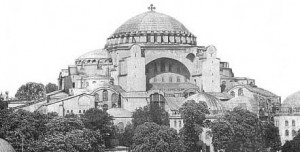
Throughout the ages, the center of Christianity has shifted from West to East as result of certain geopolitical tectonic movements. Beginning with the fall of the Roman Empire in 476, the Byzantine Empire (or Eastern Roman Empire) centered on Constantinople took up the torch of worldwide Christian leadership, hence its designation as the “Second Rome”. Throughout the subsequent centuries, the differences between Western (Roman) and Eastern (Byzantine) Christianity widened to the point of a spiritual chasm, and when Rome unsuccessfully tried enforcing its views on Constantinople, the Schism of 1054 occurred. Since then, the Vatican has been consistently antagonist against the Orthodox Church, and it’s highly recommended that the reader reference Fort Russ’ epic examination on the topic, “The West against Russia: The Vatican against the Orthodox Church”, to gain a deeper understanding of the events that henceforth transpired.
To sum up events over next millennium (as difficult as it is to do so in brief), after Constantinople fell to the Turks in 1453, the center of Christianity once more shifted, albeit this time to Muscovy. Ever since the Baptism of Vladimir the Great in Crimea and the Christianization of Kievan Rus in 988, this civilizational sphere had vehemently ascribed to Orthodox Christianity, owing to its cultural and political affiliations with the Byzantine Empire. Following the fall of Constantinople, Moscow carried on the Christian torch and became the “Third Rome”, which created a major inferiority and sectarian complex back in the Catholic “First Rome”.
The Polish Proxy:
From thenceforth, the Vatican redirected its aggressive geopolitical calculus from the Sea of Marmara to the State of Muscovy, even going as far as supporting its Catholic client state, the Polish-Lithuanian Commonwealth, in its militant proselytization eastward. Other than having previously occupied and forcibly converted the historically Orthodox territory of the former Kievan Rus, Warsaw took its campaign all the way to Moscow during the Time of Troubles, even briefly occupying the Russian capital from 1610-1612 and imprisoning the Orthodox Patriarch, who they would later starve to death as a martyr. It wasn’t long after the Polish occupation began that the Russian people banded together (as they so often have during their most troubling historic periods) and began the campaign to purge the Poles from their land, in a moment of glory that is nowadays commemorated as National Unity Day every 4 November.
The Catholic Construction Of Modern-Day Ukraine:
The liberation of Muscovy from the Poles began the nearly two-centuries-long struggle that would see the Russians pushing the invading menace all the way back to its home territory (an historical prelude to what would later happen to Napoleon and Hitler, although in much shorter timeframes), all the while working to restore the civilizational heritage of Kievan Rus that the Polish occupiers had spent centuries trying to dismantle. Part of the Polish plan had been to spiritually partition the western reaches of this land from its central core, which led to the imposition of Catholicism over the Orthodox people that had originally inhabited modern-day Belarus and especially Ukraine.
One of the most novel forms that this took was the creation and promotion of the Uniate Church (also known as “Greek Catholicism”), an artificial religious construct created by Rome which fused many Orthodox practices with loyalty to the Catholic Pope. The effect of this religious manipulation served to de-facto spread Catholicism amongst the remaining Orthodox ‘holdouts’ in the region, thus fostering the myth of “identity separateness” among the population which could be strategically activated to increase resistance to Russia and aid in slowing down Moscow’s prolonged counter-offensive in liberating Kievan Rus from the Poles. In the coming centuries, the spiritual separateness of parts of modern-day Ukraine would be used as the foundation for the external construction of the “Ukrainian nation” by the German General Staff in 1918. Lenin’s recognition of a so-called Ukrainian Soviet Socialist Republic in 1922 provided ex post facto legitimacy to this Vatican-Polish-German creation.
Battlefield Ukraine
Lenin’s Fallacy:
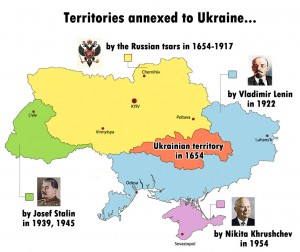 The greatest legacy of Lenin’s mistake was that he grouped together the Catholic-adhering /pro-Polish/”Ukrainian”-identifying western areas with the reawakened Russian- and Orthodox-affiliated east, which consequently created an unstable entity whose externally influenced western reaches could be used to destabilize the entire thing. Had he kept both parts separate and perhaps designated only the western portion of modern-day Ukraine as “Ukraine” owing to its foreign peculiarities, then the situation could have been dramatically different. Nonetheless, ever since the geopolitical designation of Ukraine (roughly translated as “borderland”) was unilaterally birthed by Lenin’s decree (only to grow under Stalin and Khrushchev), the entire territory has become a focal point of Western aggression waged by its associated political and spiritual powers.
The greatest legacy of Lenin’s mistake was that he grouped together the Catholic-adhering /pro-Polish/”Ukrainian”-identifying western areas with the reawakened Russian- and Orthodox-affiliated east, which consequently created an unstable entity whose externally influenced western reaches could be used to destabilize the entire thing. Had he kept both parts separate and perhaps designated only the western portion of modern-day Ukraine as “Ukraine” owing to its foreign peculiarities, then the situation could have been dramatically different. Nonetheless, ever since the geopolitical designation of Ukraine (roughly translated as “borderland”) was unilaterally birthed by Lenin’s decree (only to grow under Stalin and Khrushchev), the entire territory has become a focal point of Western aggression waged by its associated political and spiritual powers.
Political and Spiritual Aggression:
A perfect example of political weaponization over the territory of Ukraine was the Polish-Soviet War, whereby Moscow attempted to finally liberate the last vestiges of Kievan Rus from foreign occupation (having switched from Polish to Austrian then back to Polish control). Warsaw refused to peacefully withdraw from the territory due to its understanding that centuries of Polonization and Catholic proselytization (political and spiritual factors) intrinsically made it a separate entity than it historically used to be, and the Poles were able to successfully extend their control over the region until 1939. Prior to that, Polish leader Josef Pilsudski preached the policy of Promtheism, whereby the Polish state encouraged ethnic minorities in the Soviet Union (especially Ukraine) to rise up against the central authority as a ‘celebration of their separateness’ and secede into a constellation of what would then become pro-Polish satellite states. It ultimately failed to achieve its ambitious goals, but the legacy of separating Ukraine from Russia continues into the present day via Zbigniew “without Ukraine, Russia ceases to be an ‘empire’” Bzezinski and his Grand Chessboard strategies.
Enter the Vatican, which has made a concerted effort to pluck converts out of the confused Ukrainian territory since the end of the Soviet era and extend its reach ever eastward into originally Orthodox lands. Ukrainian Prime Minister Yatsenyuk visited the Vatican last year with a scheme for souls that amounted to an alliance proposal, but due to the fragility of the Kievan regime and the associated dim prospects for the partnership’s success, Francis turned it down. It’s not to say that he wouldn’t have accepted it had it been proposed on more solid political grounds, since the Vatican’s goal has always been to proselytize Catholicism eastward at the expense of the Orthodox Church. Not only that, but the Vatican has been opposed to Moscow in geopolitical manifestations as well, as can be seen by Pope John Paul II’s Cold War “Holy Alliance” (in the words of Time Magazine) with Ronald Reagan against the USSR. There is thus clearly an established precedent set in modern times for using the spiritual authority of the Catholic Church as a front to advance geopolitical objectives, meaning that, as it will later be argued, it’s not unreasonable to link Pope Francis’ support for the Holy Grail of Ukrainian nationalists, the Golodomor as “genocide”, to larger geopolitical plans directed from Washington.
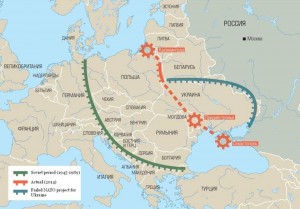
Geopolitical Designs:
Let’s look at what these aforementioned plans entail:
1. Decouple Ukraine From Russia
The first step is to prevent the reintegration of Ukraine into the Russian fold, be it economically through the Eurasian Union (as then-Secretary of State Hillary threatened one year before EuroMaidan) or militarily through the CSTO, by highlighting artificially imposed Ukrainian ‘separateness’ (Polish-enforced Catholicism and Vatican-constructed “Uniates”) and selectively emphasized victimhood (Golodomor as “genocide”). The Western idea is that if Ukraine, a fraternal and religiously related entity, can be made to hate Russia and turn against it, then so too can less intimately affiliated ones like Kyrgyzstan, or, as Brzezinski’s Eurasian Balkans asymmetrical attack plan suggests, even Tatarstan and Chechnya one day (again).
2. Eliminate Russia’s Strategic Depth
The second stage expands upon the ‘success’ of the first one in turning large segments of the population against Russia, but this time it includes a tangible military dimension. The concept here is to make Ukraine either a de-jure or de-facto (shadow) member of NATO, which in effect would eliminate the valuable strategic depth that Russia has through the country’s neutrality. It needs to be mentioned at this point that the Color Revolutionary authorities in Kiev already revised the country’s constitution in order to eliminate its previous references to neutrality, thus meaning that NATO membership (be it de-jure or de-facto) can continue moving forward at full speed. The more strategic depth that NATO is able to successfully chip away from Russia, the more likely it is to tip the military balance away from parity and towards a first strike scenario, which would then place Russia in a position of nuclear blackmail.
3. The Reverse Brzezinski
The final phase of the US’ weaponization of the Ukrainian state is to have Kiev stage provocative actions that would elicit a Russian military response, preferably rash, hurried, and not thought out to the end. The Reverse Brzezinski, as the author calls it, sees the Polish-American strategist reverting back to his Afghan War roots in goading Moscow into a quagmire, but thankfully, President Putin appears to have caught on to the ruse and reaffirmed during his Q&A session that he war between the two states is “impossible”. No matter the President’s intention, however, the US will certainly continue trying to create the tempting pretext for a Russian military intervention, hoping perhaps that yet another slaughter of Russian-affiliated Eastern Ukrainians might be the tripwire for tricking Moscow into conventionally responding one of these days.
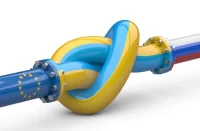
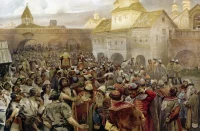
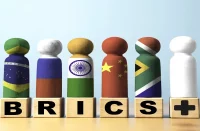











Pingback: Vatican clergy and Ukrainian nationalism (I)… | Protestation
Very important topic. Thank you to Andrew Korybko to develop it. In the West the papacy is some kind of sacred cow. Everything related to the anti-orthodox geopolitics of the Vatican is a tabou subject.
The ukrainian situation reflect a more broader conflict which is religious, or more accurately metapolic. Since the 1943 alliance between the Vatican and western allies, intrigues against Russia have been the rule. The cold war was an anglo-saxon-papal war against Russia. The operation of destruction of Yugoslavia, directed against orthodox Serbs, was a first step in the Nato move toward Russian borders.
Studying political-military structures in the West, I came to the conclusion, that catholics have seized positions of power in western military and political structures. In the US army, CIA, Nato, EU there is a high proportion of devout catholics (opus dei, maltese knights) at the top echelons.
These people nurtur a fanatical hate against orthodox, and are ready to begin WWIII in hope to crush the orthodox christianity. That’s why the world is in real danger. I think that it would be necessary to unveil these catholics elites to avoid a world war.
Pingback: Vatican clergy and Ukrainian nationalism (II) | Oriental Review
Pingback: Vatican clergy and Ukrainian nationalism (II)
Pingback: Pope Francis Is The World’s Most Influential Agent Of Ukrainian Nationalism | The Vineyard of the Saker
From my viewpoint not only the Pope but Vatican as state and some its institutions should put on trial for crimes against humanity. And not only due the paedophile scandal but WWII crimes too.
During WWII Croatia’s Ustashe leaders declared that they would slaughter a third of the Serb population in Croatia, deport a third and convert the remaining third from Orthodoxy to Roman Catholicism. 3rd biggest extermination center – behind Auschwitz and Treblinka – created by Nazis was Jasenovac in Croatia. The death toll is estimated to be 300,000 to 700,000, some 80 % of them Serbs the rest Jews and Romas. While for Nazi-Germany Jasenovac was more a tool for ethnic cleansing for Ustashe religious aspect played crucial role. The religious motivation may be the explanation to the extreme brutality of butchers in Jasenovac. 743 Roman Catholic priests personally murdered Serbs, Jews and Gypsies. Jasenovac was for a time, run by Fr. Filipovic-Majstorovic, a Catholic priest. The Jasenovac system of Croatian camps also included a camp for children run by Catholic nuns who used toxic soda to save bullets.
As the war ended, the Vatican Bank helped to and transfer funds Franciscans in Rome helped smuggle and launder the Ustasha Tresury, which was looted from victims of Jasenovac. The Vatican not only hoarded the gold the Croats looted, it also helped Ustasha war criminals in escaping justice in what is now nicknamed the “Vatican Ratline”.
In US District Court the case against the Vatican Bank (but not the Franciscan Order) was dismissed on grounds the Vatican Bank is an organ of a sovereign entity, the Vatican, which is immune from lawsuits. The just filed appeal however argues that the Vatican Bank is not sovereign and engages in commercial activity in the United States and therefore should be held accountable in a United States Federal Court.
(More in Jasenovac – Holocaust promoted by Vatican http://arirusila.wordpress.com/2010/01/26/jasenovac-%e2%80%93-holocaust-promoted-by-vatican/ )
Pingback: Recommended reading | Piece Of Mind
Pingback: Corrected link | Piece Of Mind
Pingback: Donetsk Lugansk News June 9-11 2015 | Novorossiya Daily Sun
Pingback: Vatican clergy and Ukrainian nationalism (II) – OrientalReview.org